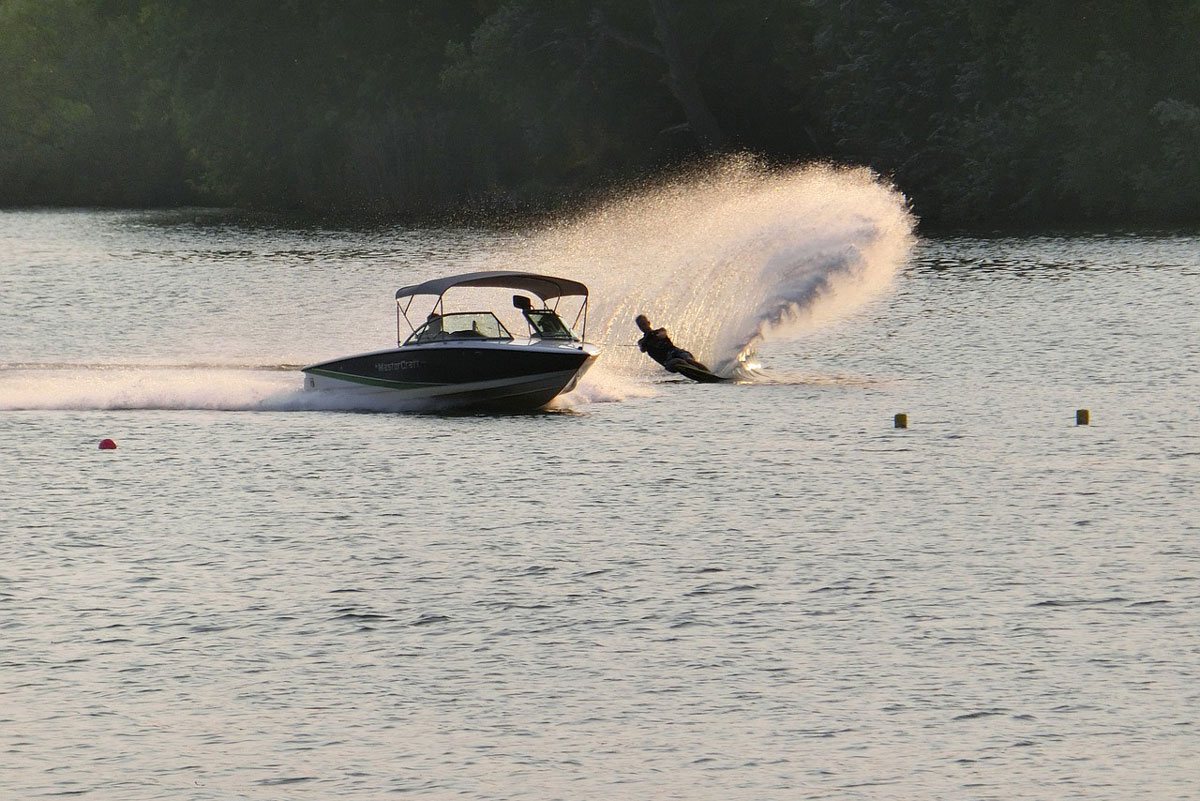The deep water start in water skiing causes more headaches and nightmares than you can imagine. People either overthink it or don’t think about it enough. There’s certainly a fine balance to be had between being aware of your movements yet trying to make it feel easy without being forced.
It is important to get the start right because poor technique and multiple attempts can cause you to fatigue. It can also knock your confidence going into a course or worse but less likely, you could end up injuring yourself in the process. Furthermore, the type of water ski you have will have an effect on how you start.
Once mastered, the deep water start will feel like a breeze and you’ll probably nail it nearly every time. Until then, though, there’s plenty of practice required and prepare yourself to start over and over again.
Getting Ready
Often the trickiest parts for people is steadying themselves and getting set for the pull. You should aim to keep your shoulders level by having your palms facing down on the handle.
You should put the rope on the opposite side to your front foot. So, if you’re left foot forwards, put the rope on the right side. Of course, this doesn’t matter if you’re using a deep v handle. Putting the rope on the correct side will allow you to keep the ski straighter as your rise out of the water.
Your knees should be bent and arms straight. Allow your legs to remain bent as you raise and naturally find their balance. One of the biggest mistakes people make is fighting the start by trying to stand up too quickly and pulling their arms in. This is the quickest way to sit back down in the water!
Hold, Hold, Hold
We just touched up on it but patience is key for a successful deepwater start. Logically thinking, you need enough speed in order to be able to stand up on top of the water. Trying to do this early will make the start either much harder or near impossible.
You should aim to wait until your ski comes to the top of the water and begins to lie flat. Counting can help with this but the variable is that not every driver pulls at the same speed. It, therefore, makes more sense to get used to the feeling and not by counting or looking down at your ski.
Eye Contact
If you’ve ever had any lessons, you’ll have heard ‘look where you want to go’. This is so true and it really affects the outcome of your start and run. Your head movement affects the rest of your body drastically. Have you ever tried to walk in a straight line with your head squint? Not easy.
It is very important that you look directly at the boat as you’re being pulled out of the water. Fight the urge to look down at what your ski is doing and trust that it’ll do the job so long as you get the other steps correct.

